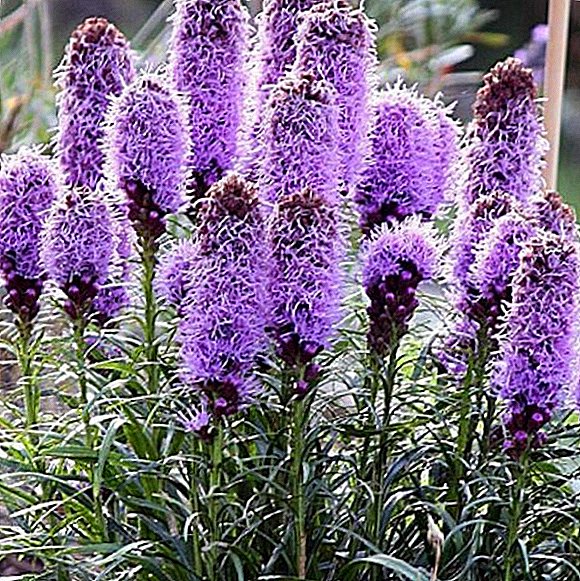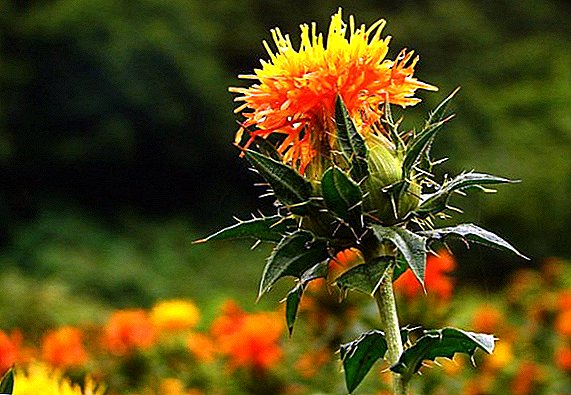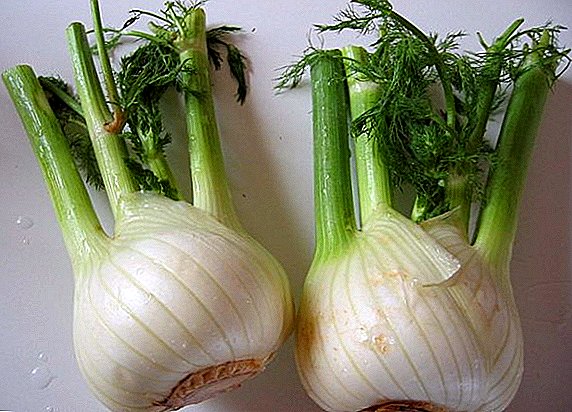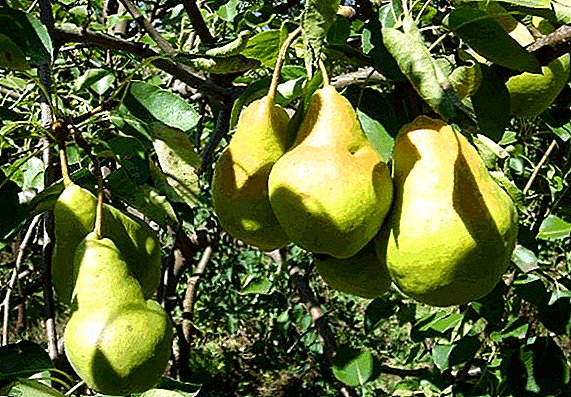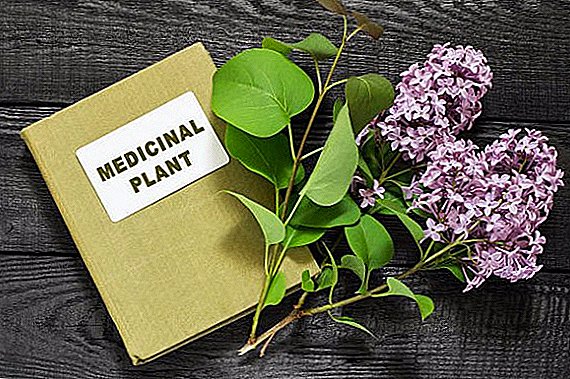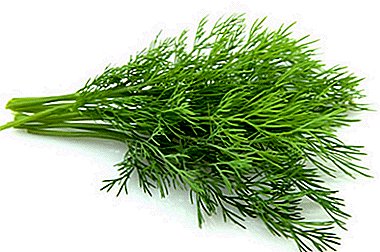
For some gardeners, dill is a once planted crop, which actively multiplies around the site like a weed, for others it is a weak plant, the struggle for growth on which is fragrant and lush foliage unsuccessfully from year to year.
The secret of a good crop of dill, grown by seeds, is the careful selection of planting material, proper sowing and compliance with agricultural practices.
Today, this plant, distinguished by unpretentiousness and frost resistance, is very much in demand both in medicine and in cooking.
How to determine the grade of green?
Stop your attention you need, first of all, on varieties with high resistance to temperature extremes, which have high germination capacity and are capable of producing abundant crops with uncomplicated farming techniques.
The following options are perfect:
- Grenadier - early ripe grade. One month after the appearance of the first shoots, you can harvest. The variety is resistant to the disease and unpretentious, the seeds have a high germination rate. Two months after sowing, you can collect stalks and seeds for spices.
- Lesnogorodsky - mid-season variety. Stable gives a large amount of foliage, even at the stage of umbrella formation and seed ripening.
- Kibray - late-ripening variety with almost one hundred percent germination of seeds and abundant foliage.
- The mischievous - a variety for a long time increasing new leaves without forming umbrella shoots.
If the purpose of growing dill is picking umbrellas, then the choice is to stop on the varieties:

- Richelieu;
- Preobrazhensky;
- Carousel;
- Redoubt;
- Anchor;
- Max;
- Gribovsky.
For armfuls of juicy greens fit:
- Alligator;
- Diamond;
- Kutuzov;
- Hercules;
- Salute.
When it is better to carry out landing, recommendations depending on a season: in the spring, in the summer, in the fall
When to plant greens and can it be done in the summer? It is possible to sow dill seedlings in open ground from early spring to late autumn.
Below are a number of recommendations, also regarding the sowing dates, which are useful for both experienced gardeners and beginners.
- In the spring fennel seeds begin to germinate at a temperature of +3 +4 degrees. Therefore, you can sow them immediately after the snow melts and thaws the soil. Then the seeds are grown every two weeks to get a constant formation of fresh greens.
- In the autumn the seeds are sown after the temperature has been established stably at a level below +3 degrees so that they do not germinate. Planting is best to mulch so that over the winter a crust does not form on the soil, through which shoots will be difficult to make their way through. It is believed that dill, sown in the fall, more hardy and resistant to most diseases.
- Summer crops give a bad result without prior preparation of seeds. Strong heat is bad for dill growth. But planted in summer plants are best suited for umbrellas.
Where to sow correctly to get a good harvest?
A place to plant dill seeds to choose sunny. A sufficient amount of light will provide the plants with healthy development and richness. Pritennye bushes drawn out, have a pale color and lose some useful properties.
The soil should be neutral and loose. Dill growing on acidic soil acquires a reddish tint, and yellow on alkaline. In both cases, the plant develops slowly, resulting in the possibility of collecting spicy greens is delayed.
Do not sow dill in areas where water often stagnates or where groundwater comes close to the surface.
Material selection
Where to get?
Planting material of various varieties of dill can be purchased in specialized stores or ordered online. When buying it is worth paying attention to the characteristics of the variety - the recommended sowing time, yield, appointment. The price of the seed varies, depending on the variety.:
- in Moscow from 40 to 150 rubles per pack;
- in St. Petersburg - from 30 to 120 rubles.
How to prepare?

- Wrap the seeds in cheesecloth and soak for about three days in water with a temperature of about 45 degrees. The separated water should be drained up to five times a day. This technique will help to disinfect the seeds and accelerate germination.
- After treatment with hot water, spread the seeds on the same gauze to cover with pieces of damp cloth. Leave for four days at +20. We need to wait until the sprouts appear.
- Dry the seeds before sowing.
Such training will allow you to get the first green seedlings in 4-6 days. Shoots of untreated seeds will appear only in 2-3 weeks. Also, preplant treatment improves plant immunity and provides seed disinfection.
Secrets of sowing in the country and at home in the garden in the garden
Regardless of where you plant dill, in the garden or in the garden at the cottage, the recommendations for cultivation will be the same. Consider how deep it is necessary to sow the seeds of dill and how to do it in the spring, what should be the distance when properly planted, and other recommendations that must be followed when sowing so that it quickly ascends.
- Beds need to prepare in advance, carefully digging the soil to a depth of 20-25cm and adding organic fertilizer.
- In the spring, the seeds are planted in moist soil, so as not to water after. To do this, make grooves with a depth of 2 cm, put the seeds in them and sprinkle with moist soil. Landing is carried out in March, April and May.
- If there is a threat of recurrent frosts, the shoots should be protected at night with any covering material.
In order to prevent plantings from thickening, the planting pattern should be as follows: 1 g of seeds is distributed for 1 square meter during spring planting and 2 g per square meter for autumn.
For dill is not necessary to organize a separate garden bed. It can be sown next to other cultures - between the rows. Great neighbors for dill:
- cucumbers;
- tomatoes;
- cabbage.
In addition to saving space, this method of landing has another benefit. Dill - a plant with a large amount of essential oils in the composition. Because of this, it helps protect neighboring crops from the attack of harmful insects.
But there are also plants that are not compatible with dill - these are carrots and celery.
Detailed step by step instructions

- Prepared for landing site mark. A wooden stick or bar form a groove, two centimeters deep, at a distance of twenty centimeters from each other.
- Deepening moderately shed water and sow planting material. Between seeds it is necessary to observe an interval of 1-2 cm.
- Sown rows are covered with slightly damp earth.
- If planting is carried out before winter, then the grooves before planting do not water.
In addition to the classic landing pattern in rows, you can apply a carpet scheme. This method will not only get the harvest of dill, but also decorate the site with a lush green veil. To do this, the seeds are evenly scattered over the selected area and sealed with a rake. After that, the soil is abundantly watered.
How to care?
- Immediately after planting you need to think about the organization of watering. It is best if it is drip.
- Before the emergence of seedlings, it is necessary to moisten the crops moderately, so that the water does not carry the seeds to the depth.
- Care should be taken to ensure that a crust does not form on the soil surface - this will complicate the germination of dill.
- In phase 2-3 of these leaves, the plant is fed with urea.
The popularity of dill among our gardeners is difficult to overestimate - this is a favorite seasoning and a constant source of fragrant greens. In order to get the harvest it was possible from the first time, it is necessary to pay special attention to the selection and preparation of seeds, as well as to comply with all recommendations on the cultivation technology.




